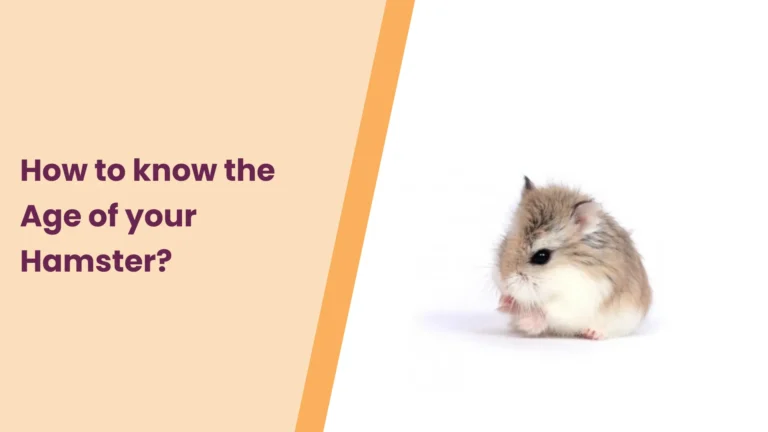Hamster Mites on Humans- Should You Worry?
Welcome to the cozy world of hamster care, where tiny paws and furry companionship make every moment delightful. As hamster enthusiasts, we cherish the bond we share with our pocket-sized friends. However, in our journey of caring for these lovable creatures, there’s a tiny intruder that demands our attention – hamster mites. Beyond the concerns for our fluffy pals, there’s a question lingering in our minds – can hamster mites affect us, the caregivers?
Join us as we delve into the intricacies of these minuscule pests, explore the potential impact on human health, and uncover the secrets to maintaining a harmonious relationship with our hamsters. Let’s ensure that our homes remain a haven for both our beloved hamsters and ourselves.
What Are Hamster Mites?
Hamster mites, those microscopic troublemakers, are tiny arachnids that can sneak into the serene world of your hamster’s fur. These pesky critters come in different varieties, with the most common ones being fur mites, ear mites, and mange mites. Fur mites, the silent infiltrators, often set up camp in the fur, causing discomfort and irritation to our unsuspecting furry friends. Ear mites, on the other hand, have a penchant for making the ear canal their cozy dwelling, leading to itching and discomfort.
Mange mites, though less frequent, can pose a significant threat by burrowing into the skin, triggering a cascade of issues. Identifying these tiny adversaries is crucial; watch out for signs such as excessive scratching, fur loss, or changes in your hamster’s behavior.
Our hamsters may not have a voice, but they communicate their distress through subtle cues. Understanding these signals and recognizing the different types of mites is the first step in creating a haven free from these microscopic intruders. As we embark on this journey to safeguard our hamster companions, let’s explore how to detect and deal with these tiny foes effectively.
Can Hamster Mites Affect Humans?

Our hamsters bring immeasurable joy into our lives, but with the joy comes responsibility. One burning question that often crosses our minds is whether those tiny mites, which can cause a ruckus in our hamster’s cozy fur, pose any threat to us, the caregivers.
While the chances are relatively low, it’s crucial to acknowledge the potential transfer of hamster mites to humans. The most common scenario involves direct contact with an infested hamster or its habitat. These minuscule mites may hitch a ride on our skin, leading to a condition known as zoonotic transfer.
Although the transfer is uncommon, it’s not impossible. Awareness is our greatest ally. By understanding the dynamics of hamster mites and their potential impact on us, we empower ourselves to take proactive measures. Let’s embark on this journey together, exploring the nuances of hamster-human interaction and discovering ways to foster a healthy, joyful coexistence.
Symptoms of Human Interaction with Hamster Mites
Our hamsters, with their playful antics and soft fur, often beckon us to cuddle and interact. However, it’s essential to be vigilant about potential repercussions, especially when it comes to the transfer of mites from our hamster companions to us, their caregivers.
Skin Irritation and Itching:
One of the initial signs of potential mite transfer is skin irritation. If you find yourself scratching more than usual, it’s time to investigate.
Redness and Rash:
Mite bites can lead to redness and a rash on the skin. Keep an eye out for any unusual patches or discomfort.
Localized Swelling:
In some cases, mite bites may result in localized swelling. Pay attention to any unexpected bumps or inflammation.
Allergic Reactions:
Individuals with allergies may experience heightened reactions. Watch for symptoms such as sneezing, nasal congestion, or respiratory discomfort.
Unexplained Skin Lesions:
Mites can cause tiny lesions on the skin. If you notice unexplained marks or sores, it’s essential to investigate their origin.
While these symptoms are relatively rare and the transfer of hamster mites to humans is uncommon, it’s crucial to be aware of any changes in your own health. By staying attuned to these subtle signals, we can act promptly to ensure the well-being of both our hamsters and ourselves. Join us as we navigate the realm of symptoms and explore effective measures for prevention and care.
Prevention Tips
Our hamsters, with their tiny whiskers and endearing quirks, deserve a haven free from the discomfort of mites. As caregivers, the responsibility falls on us to create an environment that nurtures their well-being. Here are some practical tips to keep those pesky mites at bay:
1] Regular Health Checks:
Conduct routine health checks on your hamster. Regular inspections can help detect early signs of mite infestation, allowing for timely intervention.
2] Maintain a Clean Habitat:
A tidy home is a happy home. Regularly clean and sanitize your hamster’s habitat, removing any bedding or debris that could harbor mites.
3] Balanced Diet for a Healthy Coat:
A well-nourished hamster is better equipped to fend off mites. Provide a balanced diet rich in essential nutrients to promote a healthy coat.
4] Isolate New Additions:
If introducing a new hamster to your household, consider quarantine measures. This helps prevent the potential spread of mites or other health issues.
5] Personal Hygiene for Caregivers:
Practicing good personal hygiene is not just for us but also for our hamsters. Wash your hands thoroughly after handling your hamster to minimize the risk of mite transfer.
6] Consult with a Vet:
Regular veterinary check-ups are crucial. A veterinarian can provide guidance on preventive measures and offer solutions tailored to your hamster’s specific needs.
Remember, prevention is the key to a happy and healthy life for our hamsters. By incorporating these practical tips into our caregiving routine, we create a space where mites find no welcome, and our furry companions thrive in comfort.
Treatment for Hamsters and Humans
As devoted caregivers, the well-being of our hamsters takes center stage. In the unfortunate event of a mite infestation, swift and effective treatment becomes paramount. Here’s a compassionate guide to treating both our hamster friends and ourselves:
For Hamsters:
1] Veterinary Guidance:
At the first sign of mite trouble, seek guidance from a veterinarian experienced in small animal care. They can recommend suitable antiparasitic treatments tailored to your hamster’s needs.
2] Quarantine and Isolation:
Isolate the affected hamster to prevent the mites from spreading to cage mates. Provide a separate, clean environment during the treatment period.
3] Topical Treatments:
Your veterinarian may prescribe topical treatments such as mite sprays or ointments to directly address the mite infestation on your hamster’s fur or skin.
4] Clean and Disinfect the Habitat:
Thoroughly clean and disinfect the hamster’s habitat to eliminate any lingering mites and prevent reinfestation.
For Humans:
1] Consult a Healthcare Professional:
If you suspect mite transfer to yourself, consult a healthcare professional promptly. They can assess the situation and recommend suitable treatments.
2] Topical Treatments and Antihistamines:
Depending on the severity of symptoms, your healthcare provider may suggest topical treatments for skin issues or antihistamines to alleviate itching and discomfort.
3] Personal Hygiene Practices:
Practice meticulous personal hygiene, including frequent handwashing, to reduce the risk of further mite transfer.
4] Addressing Allergies:
If allergies are a concern, your healthcare provider can guide you on managing allergic reactions effectively.
Remember, addressing mite-related challenges requires a delicate touch and professional guidance. By approaching treatment with empathy and diligence, we can ensure a swift recovery for our hamsters and ourselves.
Cleaning and Maintaining the Hamster Habitat
In the cozy world of hamster care, a clean and well-maintained habitat is not just a luxury; it’s a necessity. As devoted caregivers, our hamsters rely on us to create an environment that fosters health and happiness. Here’s your guide to keeping their homes pristine:
1] Regular Spot Cleaning:
Incorporate daily spot checks to remove any visible waste or soiled bedding. This quick and easy task goes a long way in maintaining a clean living space for your hamster.
2] Weekly Deep Clean:
Schedule a weekly deep clean of the entire habitat. Replace bedding, scrub the cage bars, and sanitize accessories to eliminate any potential breeding grounds for mites.
3] Use Pet-Safe Cleaning Products:
When cleaning, opt for pet-safe and non-toxic cleaning products. Avoid harsh chemicals that may harm your hamster or leave behind residues.
4] Rotate and Inspect Toys:
Rotate toys and accessories regularly to prevent boredom and ensure all areas are accessible for cleaning. Inspect items for wear and tear, replacing as needed.
5] Ventilation and Airflow:
Ensure proper ventilation in the hamster’s living space. Good airflow helps maintain a fresh environment and reduces the risk of mites or other pests.
6] Check for Signs of Infestation:
During cleaning sessions, be vigilant for any signs of mite infestation. Early detection allows for swift intervention and prevents the spread of these tiny intruders.
Remember, a clean habitat is not just about aesthetics, it’s about creating a sanctuary where your hamster can thrive. Join us in the pursuit of cleanliness and maintenance, as we weave a tapestry of care around our tiny, whiskered companions.
Conclusion
In the heartwarming world of hamster care, our journey has taken us through the nuances of mites and the delicate balance of coexistence between hamsters and their human caregivers. As we navigate the realm of prevention, treatment, and habitat maintenance, it becomes clear that our furry friends rely on us not just for food and shelter but for a life free from the disruptions of microscopic intruders.
By embracing a proactive approach to hamster care, we not only safeguard the well-being of our beloved companions but also enrich the bond we share with these tiny souls. Together, we create homes filled with warmth, care, and joy.
Let this be a gentle reminder that every effort we invest in understanding and addressing the challenges of hamster care is a testament to our commitment to the well-being of these small but significant members of our households.
“As fellow hamster enthusiasts, your experiences and insights enrich the collective knowledge within our caring community. We invite you to share your thoughts, stories, and tips in the comments section below. Have you faced the challenges of hamster mites or discovered a unique approach to habitat maintenance? Your valuable contributions can inspire and guide others on their hamster care journey. Let’s foster a space where we exchange not just information but also the joy and camaraderie that comes with caring for these adorable companions.
Feel free to spread the love by sharing this post on your favorite social platforms, so others can benefit from the shared wisdom of our wonderful hamster community. Together, let’s create a vibrant hub of knowledge and compassion for hamster lovers around the world.”– HamsterPit







